Have you ever wandered into your garden, arms full of tools or party supplies, only to be thwarted by a rebellious shed door that simply refuses to stay open? Keeping that shed door open isn’t just about convenience; it’s about transforming a lurking nuisance into a gateway to possibilities for your garden adventures.
From the trusty door stop to the modern marvels of magnetic holders, the ways to keep those pesky doors ajar are as varied as the contents of the sheds they protect. We’re talking wedges, hooks, bungee cords, and even the occasional stubborn rock that finds a new purpose in life.
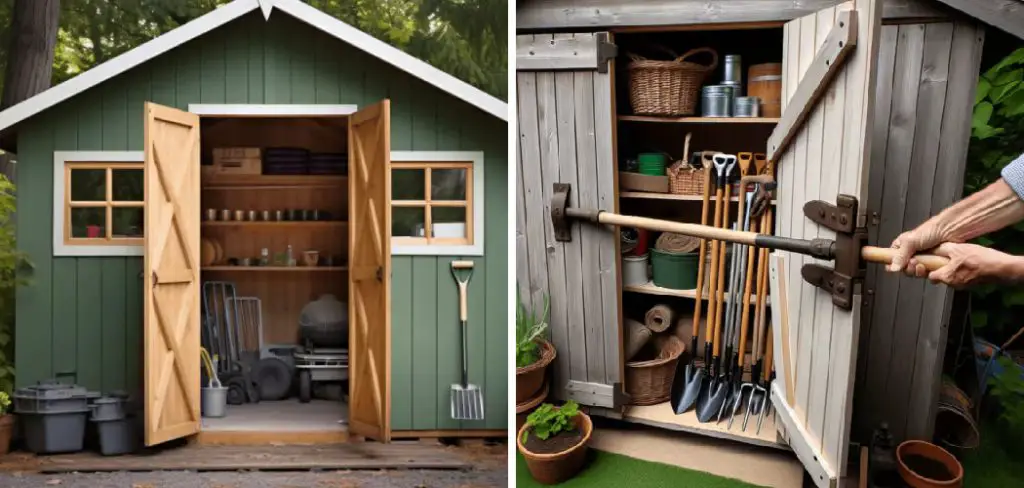
Before you start considering a permanent “open door policy” for your shed due to frustration, rest assured: There are multiple solutions to wrestle that door into submission. And yes, each method is a testament to mankind’s relentless quest to figure out how to keep shed door open, making sure you don’t get trapped in a game of door wrestling every time you need a shovel.
Door Stops
A. Choosing the Right Type of Door Stop
Picking the right doorstop is kind of like dating – it’s all about finding the one that fits your style and needs. You’ve got your classic rubber wedge that’s as loyal as an old dog, the fancy decorative ones that do more than just hold doors, and then there’s the heavy-duty metal type that means serious business.
Decide if you’re going for pure functionality, a bit of curb appeal, or a mix of both. Remember, you’re not just stopping a door but making a statement.
B. Installing a Door Stop on the Shed Floor
Once you’ve found your doorstop soulmate, it’s time to put a ring on it – or rather, screw it onto your shed floor. Grab your drill, some screws, and maybe a level if you’re feeling extra precise. Position your door stop where it can catch the door without becoming a trip hazard. Placing it slightly off-center can provide a better hold for doors that tend to swing widely.
C. Testing and Adjusting the Door Stop as Needed
Now for the moment of truth. Gently open your shed door and see if your new buddy stops it in its tracks. Are too many doors still swinging through? You might need to adjust the positioning. There is not enough clearance to open the door fully.
Time to move it closer to the hinge side. It’s a bit of trial and error, but with a few tweaks, you’ll have a door-stop setup that even a gale-force wind couldn’t budge. Plus, you’ll finally have answered the age-old question of how to keep shed door open without breaking a sweat.
How to Keep Shed Door Open: Door Latches or Hooks
A. Installing a Latch or Hook Mechanism on the Shed Wall
Alright, moving on from our trusty door stops to the world of latches and hooks – these are like the bouncers of the shed door world. Installing one is a bit like assigning a personal guardian to hold your door where you want it.
Grab your drill, a couple of screws, and maybe a friend to hold the door (it’s bonding time!). Attach the latch or hook to the shed wall at the right height. If you mess up? No worries, that’s what wood filler was invented for.
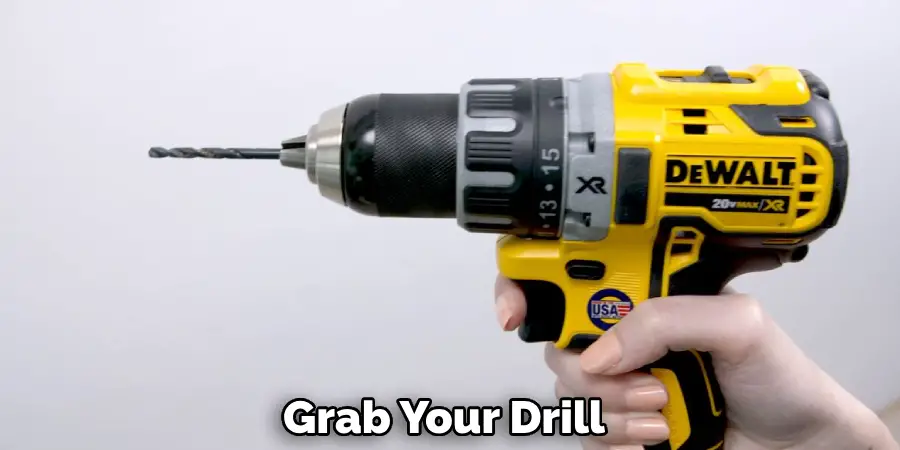
B. Adjusting the Latch or Hook to Hold the Door in Place
With your latch or hook proudly in place, it’s time for a little tug-of-war. Adjust the hook or latch to grab the door snugly—not too tight or loose, just right. Think of Goldilocks but with door hardware. It’s a balancing act; you want that door secured but not fighting against its keeper. A door that’s too snug might feel like you’re breaking into your own shed every time you need a rake.
C. Considering Locking Options for Security
Lastly, for those of you storing your gold bullion (or, you know, garden tools) in the shed, you might want to think about security. Adding a lock to your latch or hook setup can turn your shed into Fort Knox for errant garden gnomes.
There are options out there for every level of security, from simple padlocks to high-tech, fingerprint-scanning devices. Because sometimes, keeping your shed door open is less about ease of access and more about keeping the contents safe from the world (or squirrels).
How to Keep Shed Door Open: Bungee Cords or Straps
A. Attaching a Bungee Cord or Strap to the Shed Wall and Door
Okay, strap in, folks (pun intended), because we’re diving into the bouncy world of bungee cords and straps. Picture this: you’ve got a shed door that swings more than a jazz band. Enter the bungee cord – your new stretchy best friend.
First things first, find two solid anchor points – one on your shed wall and the other on the door itself. Think of it as setting up a little zip line for your door. Secure hooks or loops (depending on your bungee model) to these points. Easy peasy, lemon squeezy.
B. Adjusting the Tension of the Bungee Cord or Strap
Now, here’s where the magic happens. The key to bungee success is all in the tension. Too tight, and you’ll have a door that’s more of a workout to open than your gym’s heaviest door. It is too loose, and well, you might as well just prop it open with good thoughts. Give it a gentle test pull; aim for that sweet spot where the door stays open but doesn’t feel like it’s about to launch into orbit.
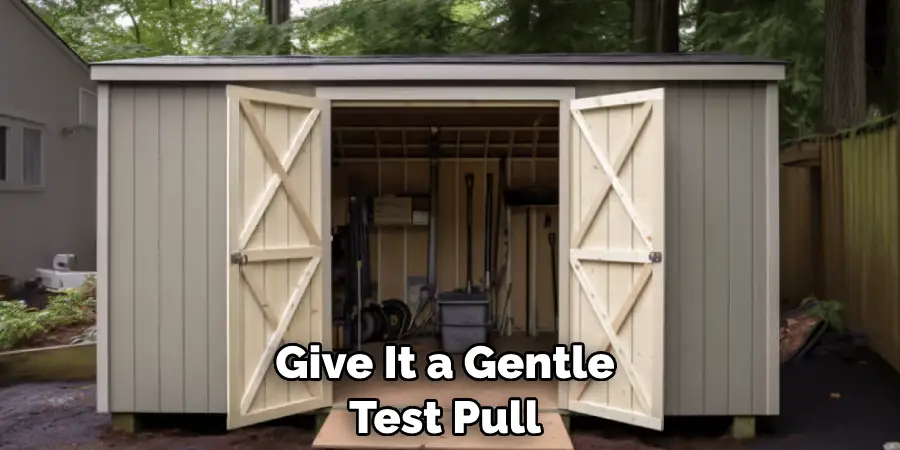
C. Using Multiple Bungee Cords or Straps for Extra Stability
Feeling adventurous? Or maybe your door just laughs in the face of a single bungee cord. Double down with another strap or cord for that extra hold. This isn’t just adding more bungee for the heck of it; it’s about creating a symphony of tension that holds your door exactly where you want it.
Picture it: two bungees, working in harmony, like a ballet dancer holding a pose – graceful yet absurdly stable. Plus, if anyone asks, you can always say it’s modern art.
Wedges or Blocks
A. Placing Wooden or Rubber Wedges Underneath the Door
Moving on to the classics – wedges and blocks. These bad boys are like the comfort food of door-stopping methods. You’ve got your wooden wedges that look like they’ve come straight out of a medieval castle and your rubber ones that wouldn’t look out of place in a modern art gallery.
Sliding a wedge under your door is like telling it, “Sit, boy.” And the best part? No technology is required, just a good old push, and the laws of physics do the rest.
B. Adjusting the Position of the Wedges for the Desired Door Height
Now, you might notice your door isn’t quite staying where you want it. No panic is needed – adjusting a wedge is easier than deciding what to binge-watch next. Slide it further for a higher lift, or pull it back for a more modest hold. It’s all about finding that Goldilocks zone for your door – not too high or low, but just right. And if you’re feeling particularly fancy, you can even sand down your wedge for a custom fit.
C. Using Multiple Wedges for Added Support
Is one wedge not cutting it? Feel free to go wild and add another! Stacking wedges or using them on both sides of the door can give you that extra stability, ensuring your door stays put like a well-trained pet.
It’s like having a backup singer for your lead vocalist – providing that extra support to ensure the performance is spot-on. Remember, the goal here is door stability, not constructing a modern art sculpture (unless that’s your jam).
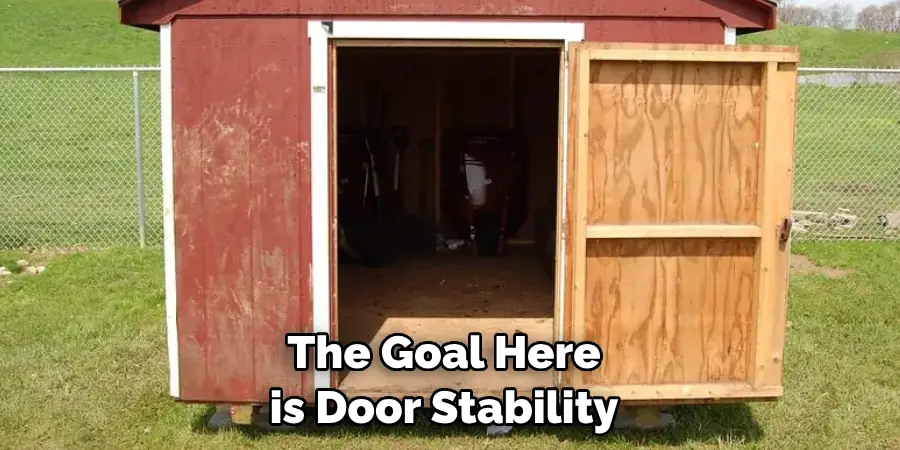
Magnetic Door Holders
A. Installing Magnetic Door Holders on the Shed Wall and Door
Welcome to the future, folks – where we throw physics a curveball with magnetic door holders! Installing these bad boys is like giving your door a magnetic handshake that says, “We’re in this together.”
First up, you’ll want to stick one part of the magnet on the shed door and its counterpart on the wall. It’s a bit like setting up a blind date between two magnets – make sure they’re a good match and will meet without a hitch.
B. Adjusting the Strength of the Magnet for Desired Door Hold
Now, for the moment of truth – the magnetic grip. Not all doors are made equal; some are featherweights, while others could double as a medieval battering ram. You might find yourself with a magnet that’s more of a gentle suggestion than a firm grip. Fear not!
Many magnetic door holders come with adjustable strength. It’s a bit like turning up the volume on your favorite song – crank up that magnetism until your door stays put, defying even the mightiest of breezes.
C. Ensuring Proper Alignment and Contact Between Magnets
Last but not least, alignment – it’s crucial. If your magnets are like two ships passing in the night, they won’t do much to hold that door open. Make sure the magnets are lined up as perfectly as the stars in the sky.
This might require a bit of a dance, shuffling them around until they click, both literally and metaphorically. When done right, you’ll have a door that hangs open as if by magic, ready to welcome you into your shed without any fuss.
DIY Solutions
A. Creating a Homemade Door Stop or Wedge
Who said you need to spend big bucks for a fancy door solution? Not I, said the crafty homeowner. For a start, you can carve out your very own doorstop or wedge from the remnants of history in your garage.
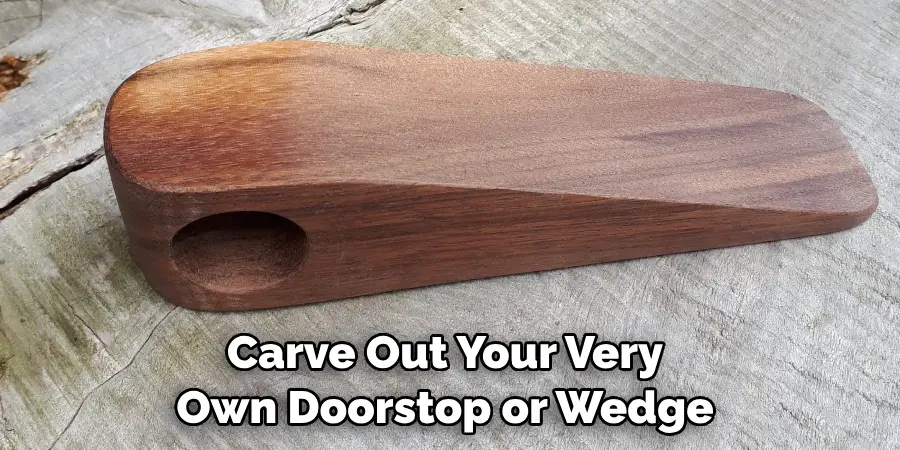
Do you have an old piece of wood or a chunky rubber piece lying around? Congratulations, you’re basically halfway there. Shape it up to give it that sleek, door-stopping charm. It’s like arts and crafts, but instead of fridge-worthy art, you get something that wedges your problems away.
B. Repurposing Household Items as Door Holders
Hold onto your hats if you thought turning a spoon into a catapult was the peak of repurposing. Pretty much anything with a bit of heft to it can act as a door holder. A hefty book that you swore you’d read but is now just collecting dust? Perfect. That one dumbbell from a set where the other has mysteriously vanished? Ideal. It’s not just a door holder; it’s a conversation starter.
C. Getting Creative with DIY Solutions
Lastly, the world of DIY solutions is your oyster, and boy, are there pearls to be found. Ever thought about filling a small bag with sand or rice, and bam, doorstop? Or what about those old jeans you can’t fit into anymore?
Cut a leg off, stuff it, and suddenly, you’ve got a denim doorstop that’s as fashionable as it is functional. The key is to look at things for what they are and what they could be. In the land of DIY, a little imagination goes a long way in keeping doors exactly where you want them.
Safety Considerations
A. Ensuring Door Stops or Holders are Securely Installed
Safety first, folks! While it’s all fun and games inventing quirky door holders, we must ensure these contraptions are as secure as Fort Knox. A wobbly doorstop is like a chocolate teapot – it looks good but is pretty useless when things get hot.
Double-check those installations; a few extra minutes spent tightening screws or ensuring your wedge is the right shape can prevent a comedy of errors involving stubbed toes or worse.
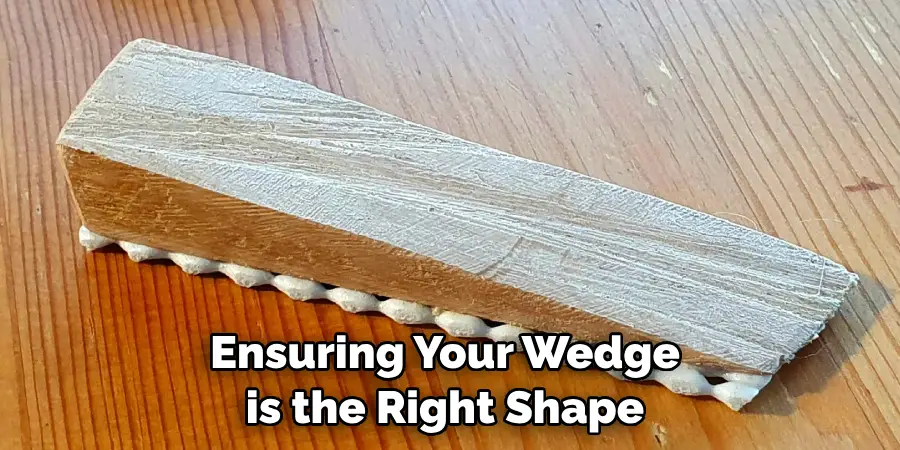
B. Checking for Potential Hazards or Obstructions
Now, onto playing detective – check the surroundings for any sneaky hazards or obstructions. That book you’ve repurposed as a door holder? Make sure it’s not creating a trip hazard.
And those magnetic door holders – ensure they’re not about to catch someone unaware. It’s like setting up a booby trap but forgetting you’re the one living there. A quick scan of the area can keep your domain safe for all who traverse it.
C. Regular Maintenance and Inspection of Door Holding Mechanisms
Last but definitely not least, maintenance is key. Even the best door solution can become a rogue element without some TLC. Regularly inspect your setups – it’s like having a spa day, but for your door holders.
Ensure wedges are still wedgy, magnetic holders haven’t gone on a walkabout, and DIY solutions aren’t plotting a rebellion. Keeping everything in tip-top shape means your doors stay exactly where you want them, with no surprises included.
Frequently Asked Questions
Q1: Can I Use a Magnetic Door Holder for A Heavy Garage Door?
A: Absolutely! Just ensure you’re choosing a magnetic holder with the strength to match Hercules. Think of it as arm-wrestling – you wouldn’t pit a toddler against a professional wrestler unless you’re into major upsets.
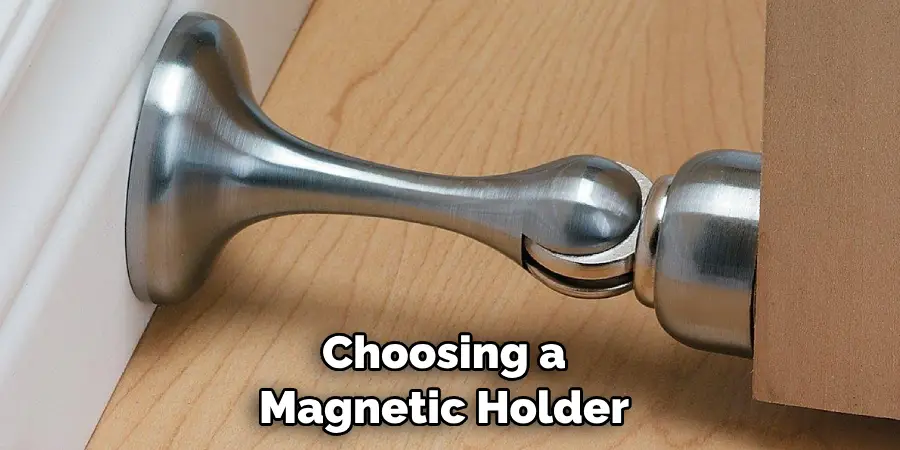
Q2: Are Diy Door Stops Effective for All Types of Floors?
A: For sure, but it’s all about matchmaking. Some floors are smooth operators, and others have the grip of a needy octopus. Rubber works great on slick surfaces, while heavier objects are universal charmers. It’s like dating for your floors – find the right match, and you’ll be set.
Q3: How Often Should I Check My Door Holders for Wear and Tear?
A: Treat them like a car – give them a check-up every few months or so. If you start hearing creaks and groans, don’t wait for it to start begging. A little love goes a long way to prevent your door holder from turning into modern art.
Q4: What’s the Most Unusual but Effective Door Holder You’ve Seen?
A: Oh, where to begin? How about a vintage toaster that refused to give up the ghost and turned into a doorstop? Or a beautifully chunky lava lamp giving psychedelic vibes at the entrance? It’s like “America’s Got Talent,” but for door holders.
Q5: Can Door Holders Also Work for Pets or Small Children?
A: Well, while we don’t recommend trading in your nanny for a door holder, they can definitely keep doors from slamming shut and freaking out your furry friends or curious tots. Just ensure they’re securely installed to avoid becoming a plaything. It’s like toddler-proofing, but cooler.
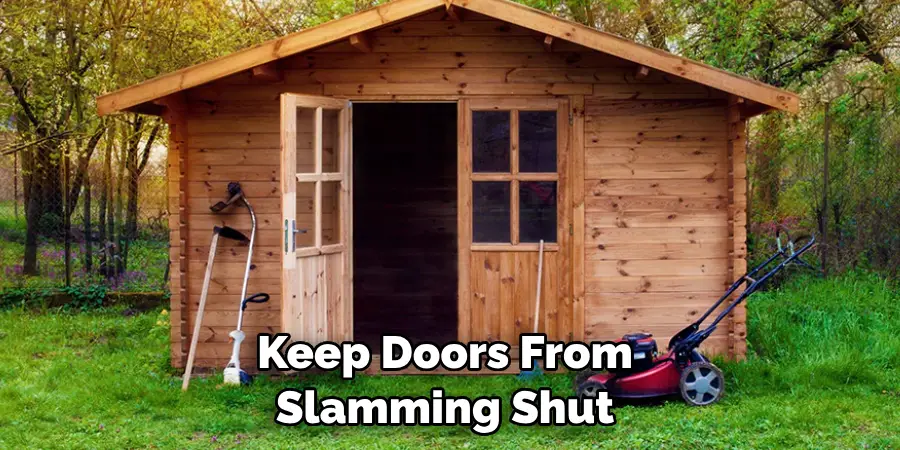
Conclusion
Well, folks, we’ve danced through the world of door-holding solutions like a leaf on the wind – from the high-tech allure of magnetic door holders to the humble charm of a wedge carved from garage remnants. We’ve explored how to use everything but the kitchen sink (though, if you’re creative enough, why not that too?) to solve the age-old riddle of how to keep shed door open.
Now that you’ve been armed with many tactics, from the DIY to the buy-it-now, the path forward is yours. Remember, the best solution is the one that sings in harmony with your shed’s unique rhythm and blues. It’s about making that door stay put, sure, but it’s also about making your life a tad bit easier – and isn’t that a melody worth playing?
In the great concert of life, may your door never slam shut at an inopportune moment. Here’s to finding the perfect balance between functionality and flair, and here’s to you – the maestro of your shed’s symphony. Good luck, and may your doors stay as open as your heart desires, with nary a breeze nor a misstep to close them prematurely. Cheers to mastering the art of how to keep shed door open!
